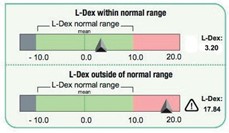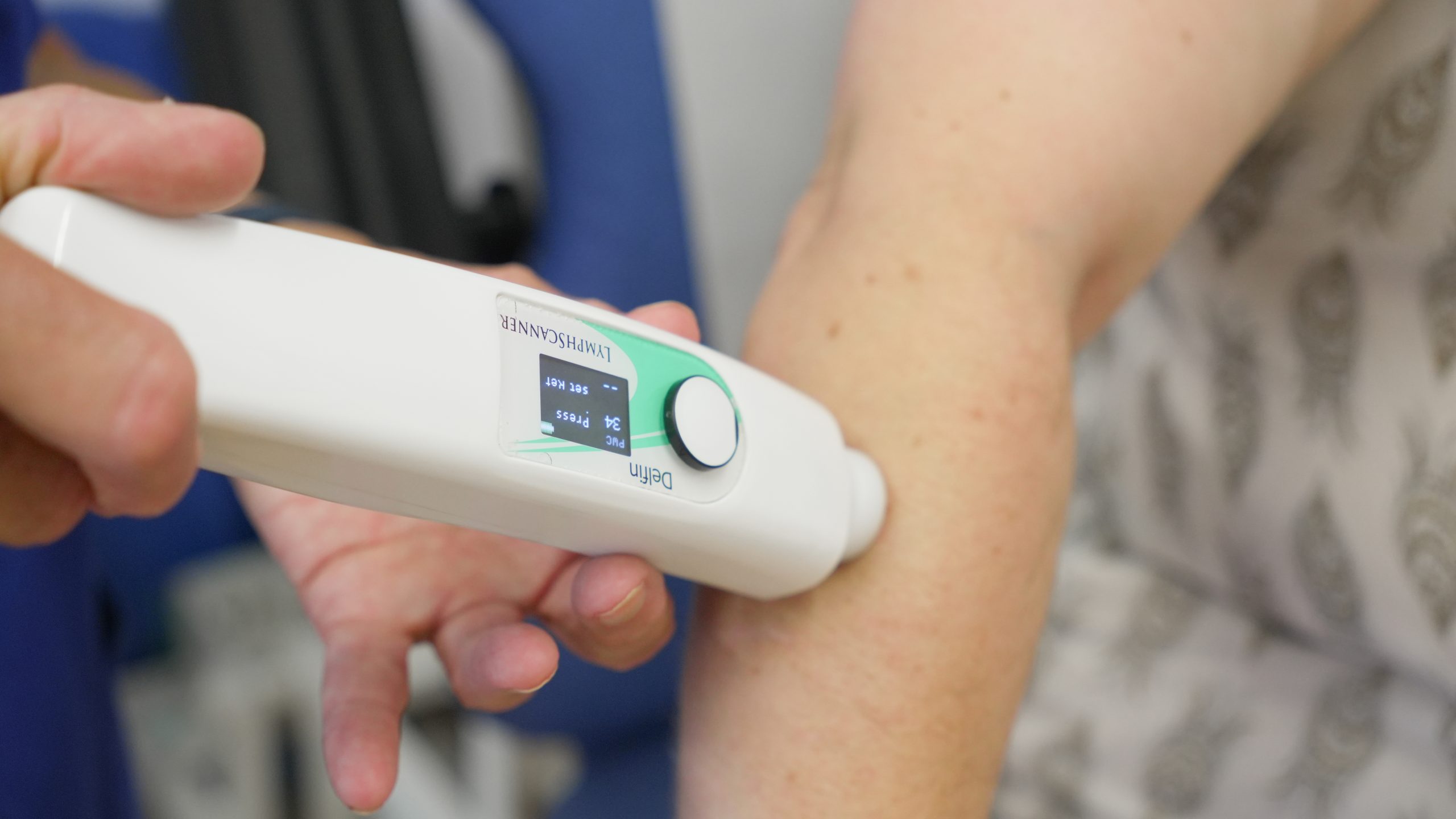Accurately monitoring development of lymphoedema
What is an L-Dex measurement?
L-Dex is a method of measuring the fluid levels in your arm or leg and monitoring early changes.
L-Dex passes a harmless electrical signal through the body. You will not be able to feel this.
L-Dex compares the fluid in the unaffected and the affected limb (the side where the lymph nodes were removed).
The normal range is -10 to +10.
L-Dex will not identify oedema (swelling) in the hand, breast, or feet.
Where and When
In most cases a baseline measurement will be taken just before your surgery.
If not, we will set the baseline on your first appointment with us so don’t worry. Ideally, your measurements should be taken around the same time of day.
This will be repeated every three months for two years at our Lymphoedema Clinic.
Please ensure that before the reading is taken:
- You are normally hydrated
- Remove all metal Jewellery including belts, however items above the neck are fine
- Remove coins, electronics, or keys from pockets
- You have an empty bladder
- You have not exercised 4 hours prior to the reading
- Avoid caffeine 2 hours prior to reading
- Have not consumed alcohol 8 hours prior to the reading
- Avoid a large meal.
You will be weighed at each appointment and then asked to remove your shoes/socks or stockings, dampen feet with the wipe provided and then stand on the SOZO machine, which should take no longer than a few minutes.
You must tell us if you may be pregnant, have a pacemaker or other implanted metal device or have any pins or plates in your bones.
What happens if my L-Dex is outside normal range?
If your L-Dex is out of range or if there is a significant change from baseline we will start early treatment in Lymphoedema prevention.
L-dex is designed to detect very small changes of fluid within the tissues and this is highlighted by the readings taken.
If these readings have changed significantly or if they are out of normal range, your clinician will discuss wearing a compression garment.
The aim is to try and bring this reading to within normal range again and you will be reviewed sooner (usually within 6-8 weeks) to monitor progress and stabilise the readings.
By identifying and starting treatment earlier it may help prevent the swelling progressing, and should provide better outcomes for long term management for those that do develop lymphoedema.

